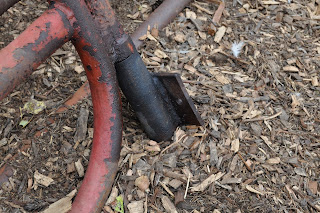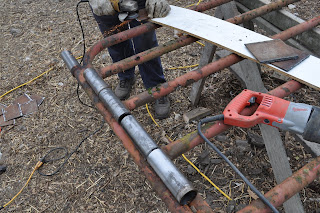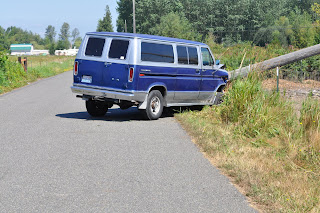I have been receiving two truckloads of vegetables and fruits, culled from area supermarket produce departments, and have been feeding them to my pigs. Each truckload is roughly a full-sized dumptruck worth of food, and in a super market, the fruits and vegetables are often some of the most expensive food. (Most expensive food: We hear that all the time by people who complain about subsidized calories present in processed foods, mostly derived from corn. )
This truckload is pretty typical. We've all seen this in the average store; the cantaloupes and sweet corn, cherries and broccoli, watermelons. Watching these piles of food arrive I'm curious if this happens at every supermarket around the country. Each load I get from just 8 stores is between 3 and 5 tons of food.
I'm going to figure that there's something like one grocery store for every 2,000 people in the USA. There are about 300 million people in the USA now. That means there are 150,000 grocery stores, give or take.
If every one of those stores are throwing away 1 ton of food a week that's 150,000 TONS of food each week.
Some of this food has traveled hundreds or thousands of miles. The oranges can't be grown in Washington State. the papayas -- Mexico, Caribbean, Philippines. Pineapples? Hawaii maybe. The corn has a good chance of being local, some of the vegetables -- tomatoes are probably from a few hundred miles away at the most.
This berkshire pig is enjoying produce from Costa Rica
I feel like I'm doing my part by keeping this out of the landfill, and I'm glad that the grocery stores are doing their part. I think that this is a good use of the produce. I am just a little overwhelmed that there is this much human food wasted in our food distribution system.






















































